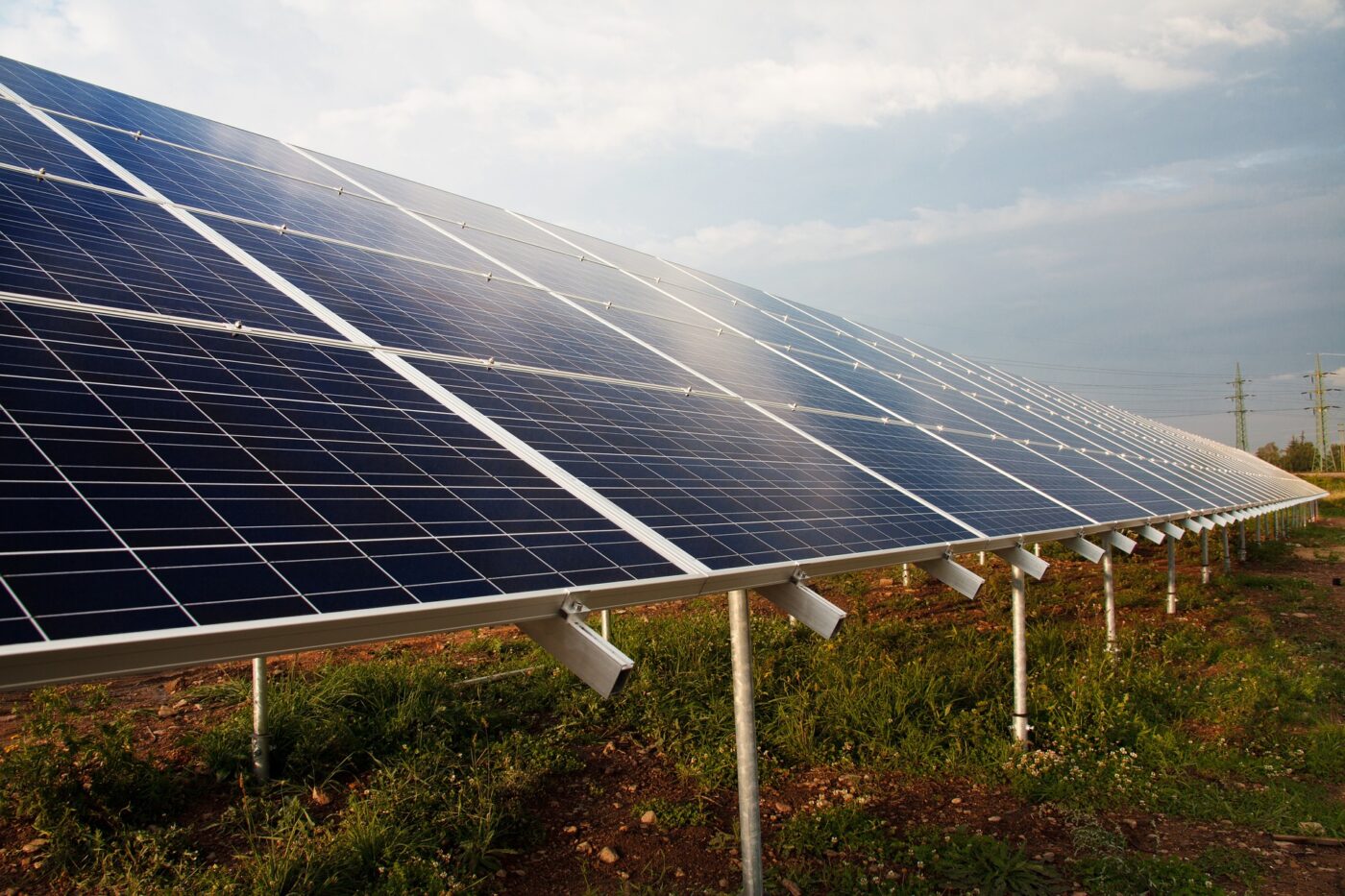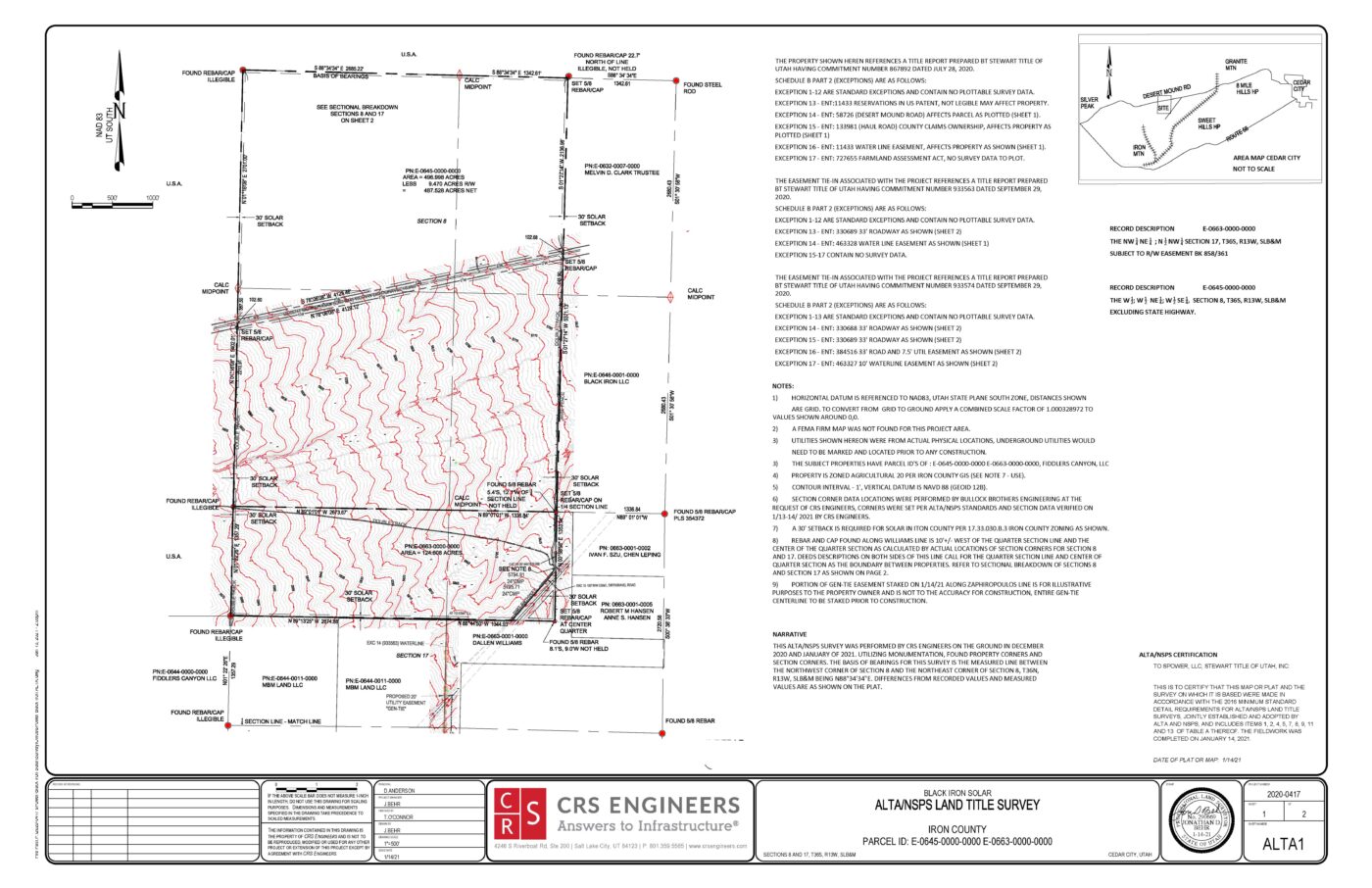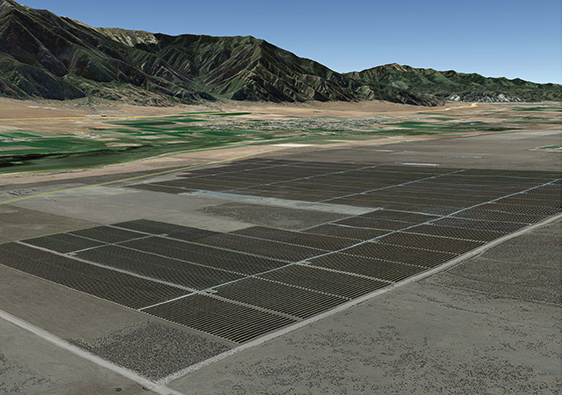Empowering Utah’s Energy Future: Evaluating Rural Sites for Commercial Solar Power

Mounted solar photovoltaic (PV) panels on a solar farm
It’s a sunny time for solar power, and the demand for commercial solar farms is on the rise. Federal incentives to transition to green power and the emphasis on more sustainable power options has contributed to this shift.
Large-scale solar power farms generate electricity using photovoltaic (PV) panels. They typically consist of thousands of solar panels installed on a large tract of land. Commercial solar plants can range in size from a few megawatts (MW) to hundreds of MW, and they can generate enough electricity to power thousands of homes and businesses.
The growth of large solar fields, with acres of panels pointed towards the best sun angle, are not put in place casually – their location is well researched, and many factors go into the location choice, including:
- Evaluating the property for legal restrictions that might preclude a solar farm – is there zoning to work around?
- How will the solar field connect to the established power grid? Is there a corridor in place that would allow the infrastructure needed to connect?
- What are the topographical and geological conditions at the site? Determining the boundaries of where the solar panels should be located will take into account site grading, a structural evaluation, and shade analysis.
CRS has performed a number of solar farm surveys that have helped companies determine if a site is worth investing in for solar panels and where on the site the panels should be installed. As part of the evaluation, our survey team provides parent companies with the following information:
1. Physical Analysis
A drone flies over the site and the data gathered is used to create a LIDAR model of the area. We set photo control and establish coordinates in this phase.
2. Alta Land Title Survey
An ALTA survey provides the due diligence for commercial real estate transactions. This complex boundary survey includes research to identify title issues with the potential property and would include any easements affecting the property, any existing property improvements, state boundaries, and topographic data.

ALTA Survey of Solar Project in Iron County, Utah that did not go forward
3. Construction Layout
We use the survey control from the ALTA survey to put together the construction layout. The solar farms are designed with panels in long rows, and investors prefer large uninterrupted stretches of panels. Our surveys determine the framework and the end point of panel installation. The survey helps identify the angles that the panels will be installed.
The data from this step can be used as a basis for the go/no go discussion of the project and the design phase. We work closely with property owners to map the site, including parts of parcels, and provide a give and take on the final location for the solar field.
The CRS surveying team works with companies that either build and operate the final solar installation themselves or build the project and then sell the enterprise to another organization to run. Solar projects can provide a significant opportunity for rural communities in the West where the amount of sun and open land provides a location advantage. At the end of 2022, 11.1% of Utah’s electricity came from solar, which ranked the state 12th nationally for solar power.
A successful example of a solar farm is the central Utah community near Mona, Utah, which benefitted from additional jobs, tax revenue, and engagement when the Clover Creek Project (AES Corporation) was constructed in Juab County, 1.5 miles west of Mona. The 575-acre project, in the shadow of Mt. Nebo, provides renewable energy to the Utah Municipal Power Agency and six of its member cities: Provo, Spanish Fork, Nephi, Salem, Manti, and Levan. The 80 MW of energy produced there will power the equivalent of 25,532 homes with electricity for a year.
CRS provided the survey for the project to help confirm the boundaries of the site and the location of the panels. The survey input contributed to the success of the solar installation project which has been online since 2021.
Commercial solar farms can provide a significant source of clean, renewable energy for businesses and utilities. CRS is happy to be a part of adding this environmentally responsible energy source to Utah.
For more information, contact Jon Behr at jon.behr@crsengineers.com


